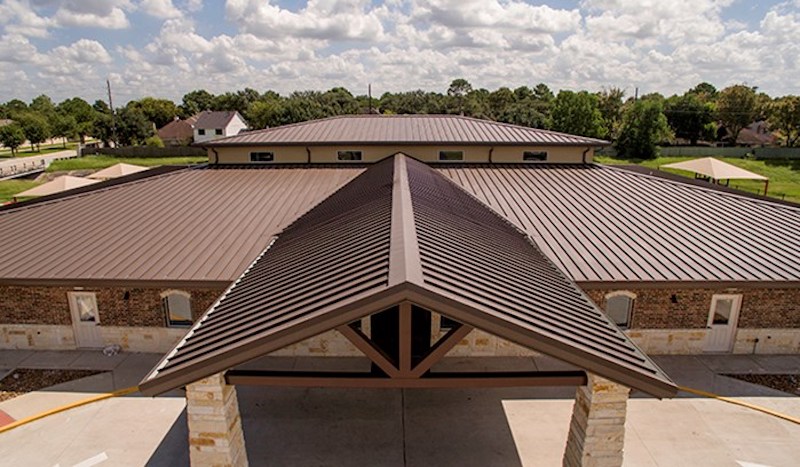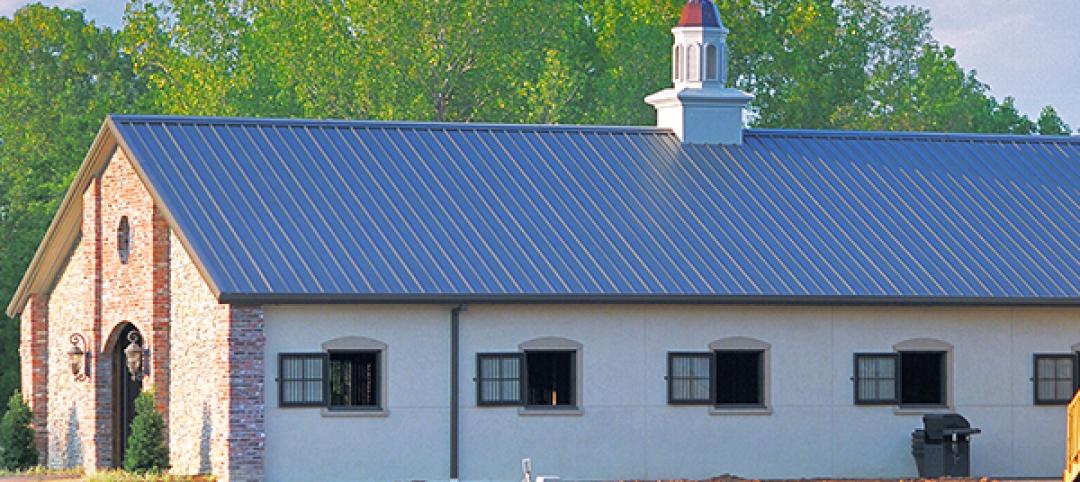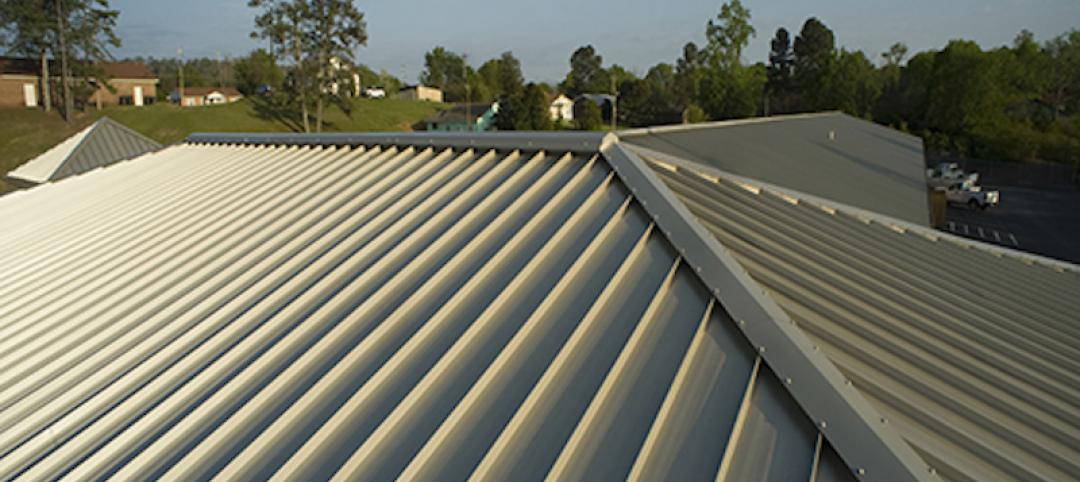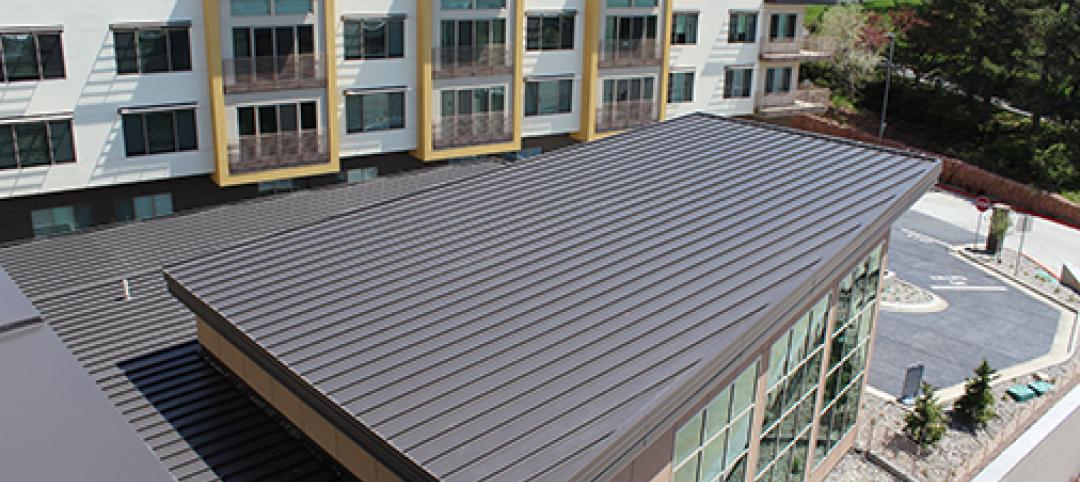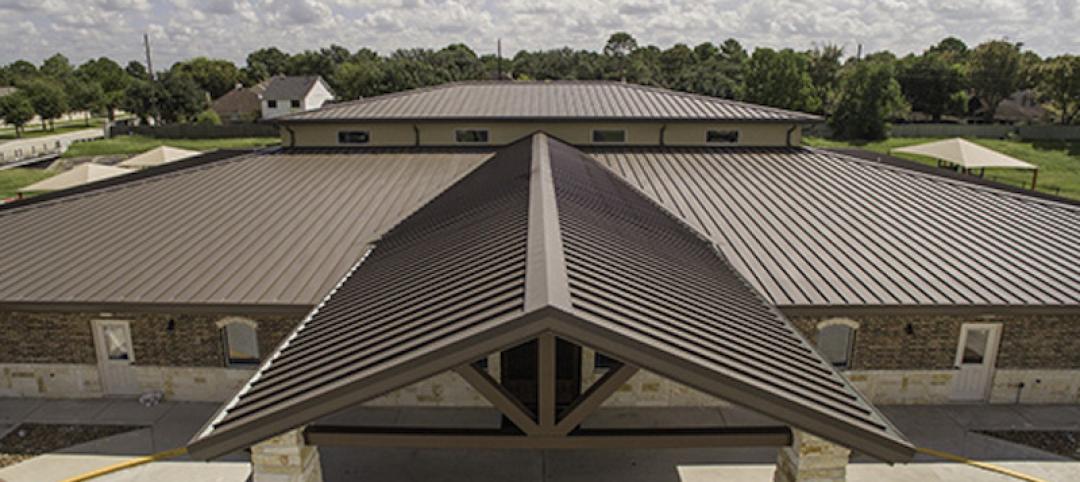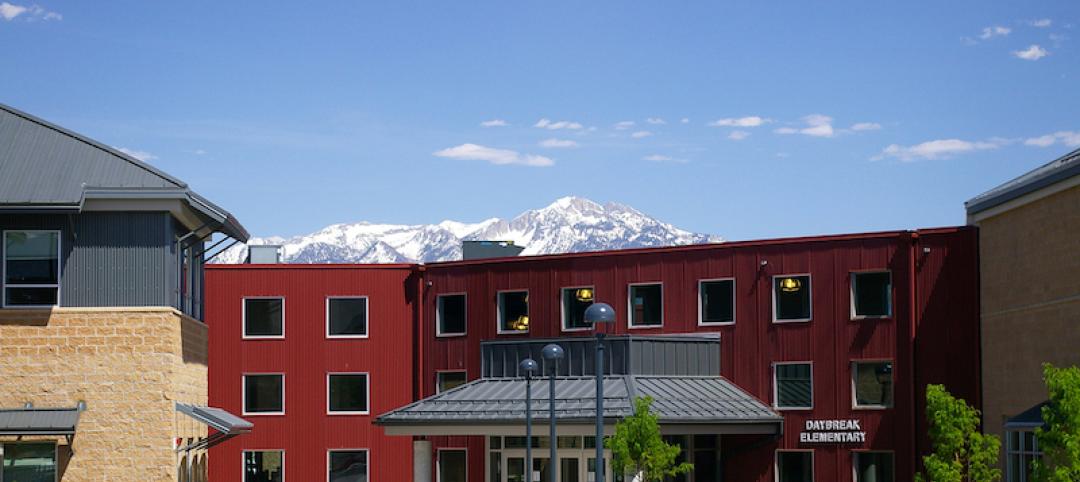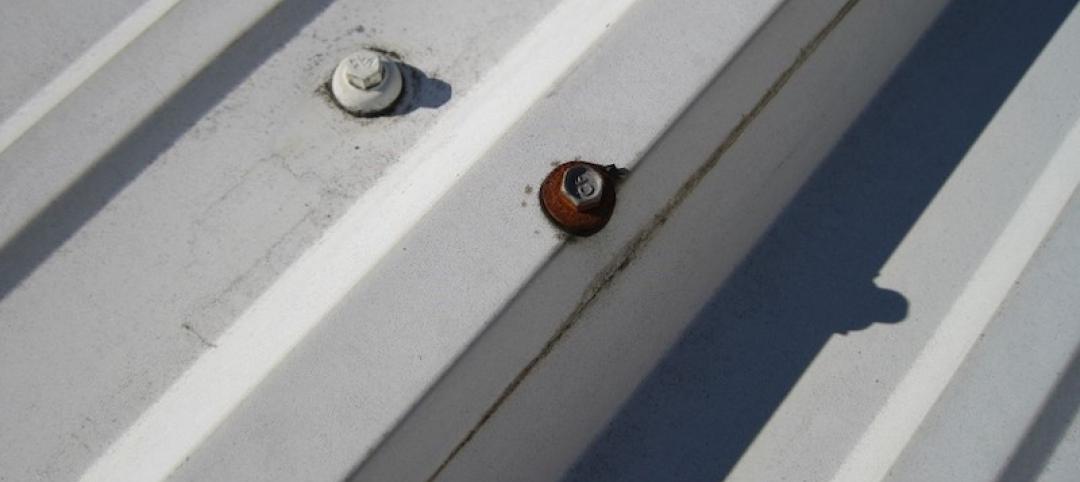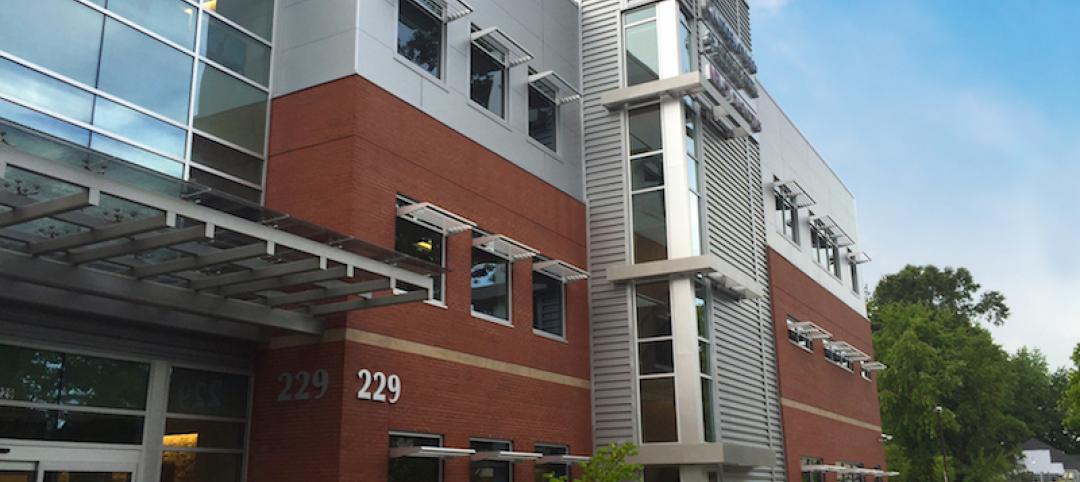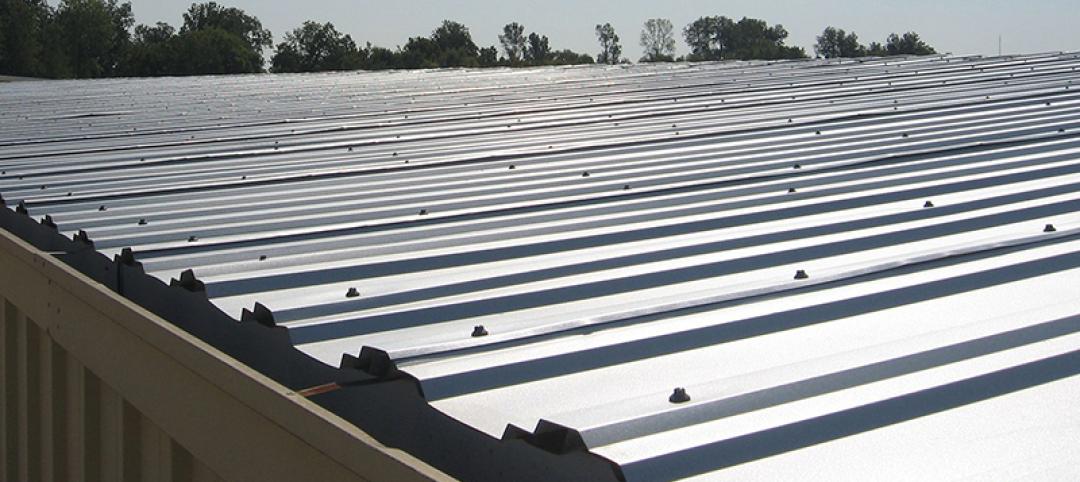Metal roof installation techniques vary greatly depending on the fastening system selected. For single skin roofing, there are three different fastening systems to consider: concealed, exposed and standing seam.
Standing Seam Metal Roof Panel Installation
Standing seam metal roof panels are attached to the substrate with concealed mechanical clips that are available in a variety of stand-off heights. These clips allow space for various insulation thicknesses, depending on the clip height. The design of most clips allows the roof panel to expand or contract independently of the substrate. This feature contributes to the durability and longevity of the panels as they’re able to adapt to the thermal movement of large roof surfaces. These panels are ideal for use in the following industries: heavy commercial, industrial, architectural and some residential applications.
Standing seam panels can be installed over solid substrates or open framing. During the installation process, it’s important to pay close attention to proper panel alignment and engagement as well as substrate squareness and modularity of the install. This ensures that the panel seams are completed properly via Snap Lok or Mechanical Seaming. Either seaming method, depending on the panel profile, will encompass the panel clip into the panel seam, allowing for expansion and contraction of the roof system. All sidelap sealants are factory-installed. Most roof slope applications are ¼:12 and ½:12 but some may require 3:12 or greater depending on profile and seam type.
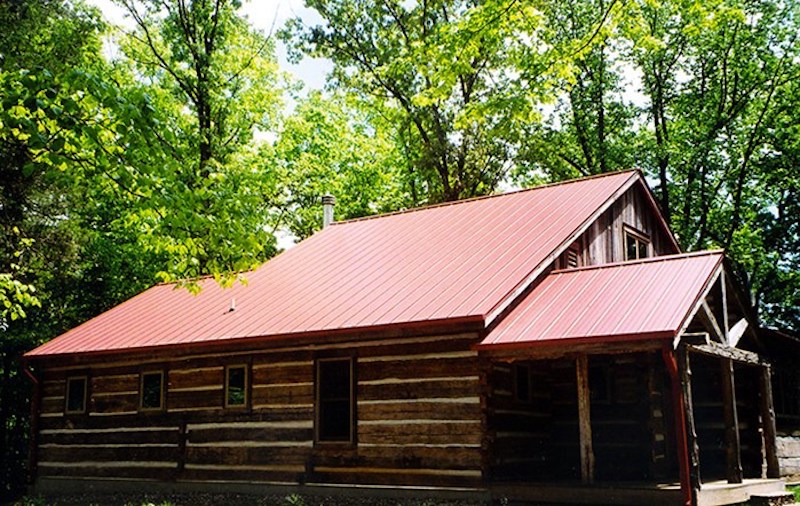
Concealed Fastened Metal Roof Panel Installation
For concealed fastener metal roofing systems, fasteners are fixed and hidden by either a snap-over sidelap or—in some cases—a snap-on batten cap. These panels are typically 16” or less in width and used on roofs that have a 3:12 or greater slope. They’re ideal for use in the commercial, architectural and residential industries, where they can be installed over conventional or wood-framed substructures.
Concealed fastened roof panels can be installed directly over solid substrates with a waterproof membrane. They require a minimal number of fasteners per panel sidelap or clip. No special tooling is required to snap laps or engage the panel battens.
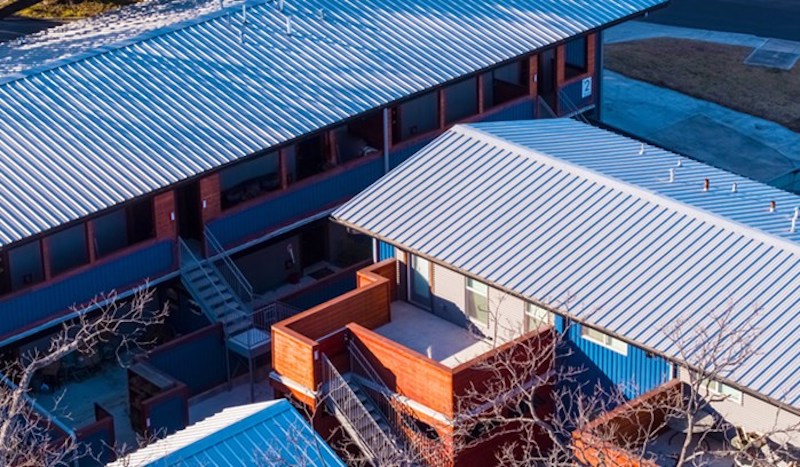
Exposed Fastened Metal Roof Panel Installation
Exposed fastened panels are attached to the substrate with exposed through fasteners that include washers for weathertightness. This roofing system is ideal for use in the commercial, industrial, agricultural and residential industries due to its low cost, ease of installation and the wide variety of profiles available for light applications.
Exposed fastened panels are installed over solid substrates or open framing using many exposed screws. Proper alignment and engagement of fasteners is ensured through field applied systems, and the spacing of these screws is dictated by the substrate type and project design loads (up to 12” on center with patterns) and location on the roof (i.e. eaves, rake or ridge). The sidelap sealants are field-applied for all profiles, and roof slope applications can vary from a minimum slope of ½:12 to 1:12 depending on product profile requirements.
For more information about installing these roofing systems, view our in-depth installation materials. Also, feel free to contact our knowledgeable team with any additional metal roof installation questions.
More from Author
MBCI | Dec 16, 2019
Cutting Metal Panels On Site
Cutting metal panels during project installation is a common construction practice. Check out this new blog post for field-cutting techniques, tools and best practices that can help preserve metal roof and wall panel appearance and longevity.
MBCI | Nov 15, 2019
Upgrading your roof with metal panels
We’ll address some ways metal roofing systems are an advantage when upgrading your roof and restoring your building to “like-new”, weathertight condition.
MBCI | Oct 15, 2019
Should you repair or replace a roof? How to decide
There are a number of key considerations.
MBCI | Jul 16, 2019
Metal roof seaming best practices
Because of the critical nature of seaming metal roofs, the crew members doing this work should be properly trained.
MBCI | Jun 12, 2019
Understanding LEED for green metal buildings
While some may think that a green building costs more and is more complicated to build, that is not actually the case.
MBCI | Apr 10, 2019
Long-life fasteners: A key component of a properly installed metal roof
The fasteners used to attach a metal roof system are a significant part of the roof performance and, in turn, of the whole building.
MBCI | Mar 25, 2019
Insulated metal panels achieve high-tech design aesthetics
The new facility is expected to increase the number of jobs within the community.
MBCI | Feb 1, 2019
Why choose Retro-R® panels?
If your existing R-panel roof is in need of replacement or repair, Retro-R® panels may be the right retrofit solution.

